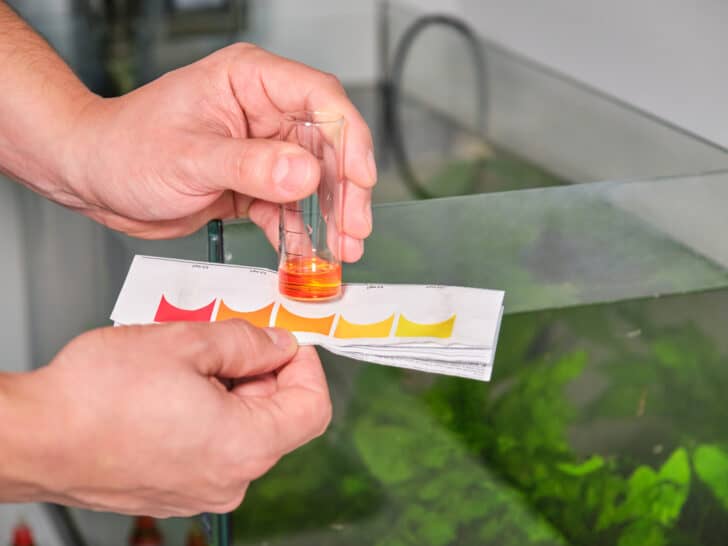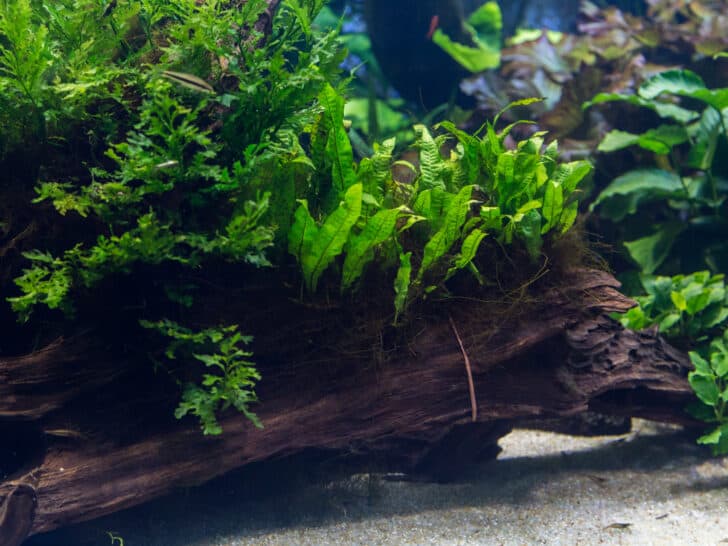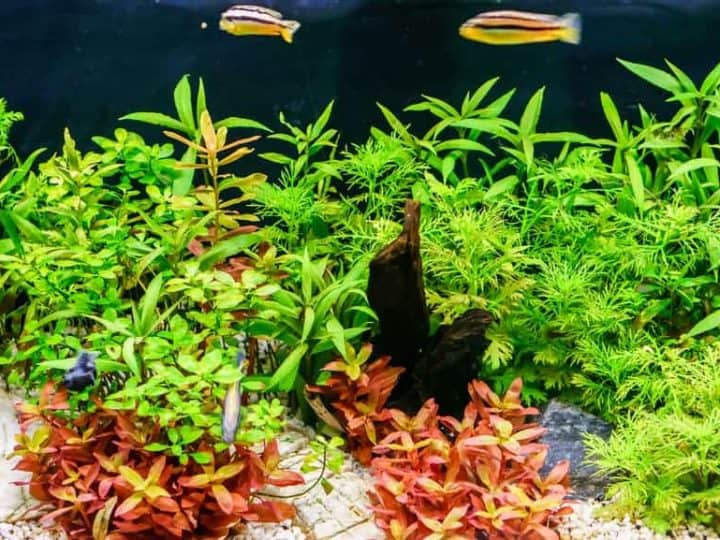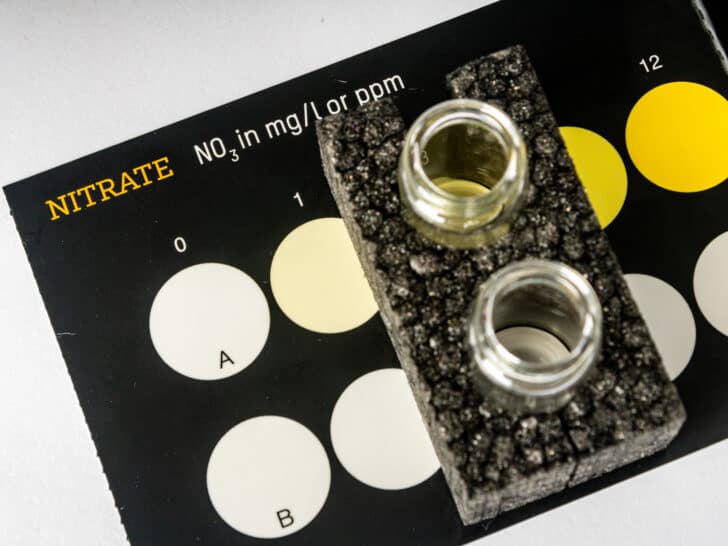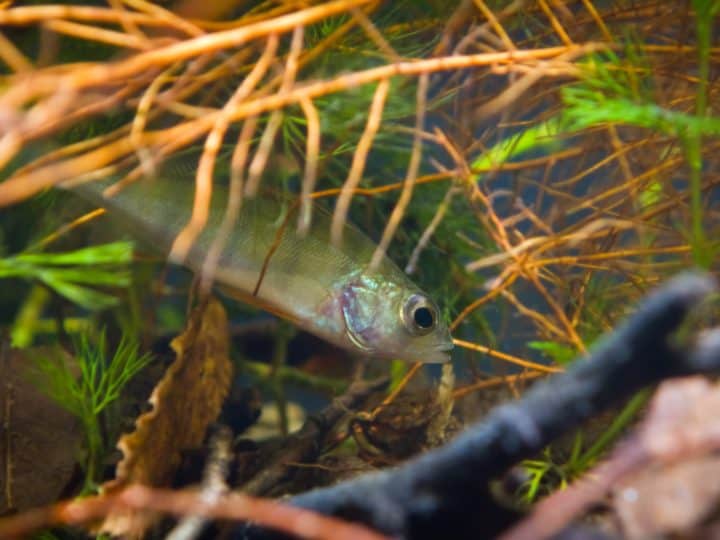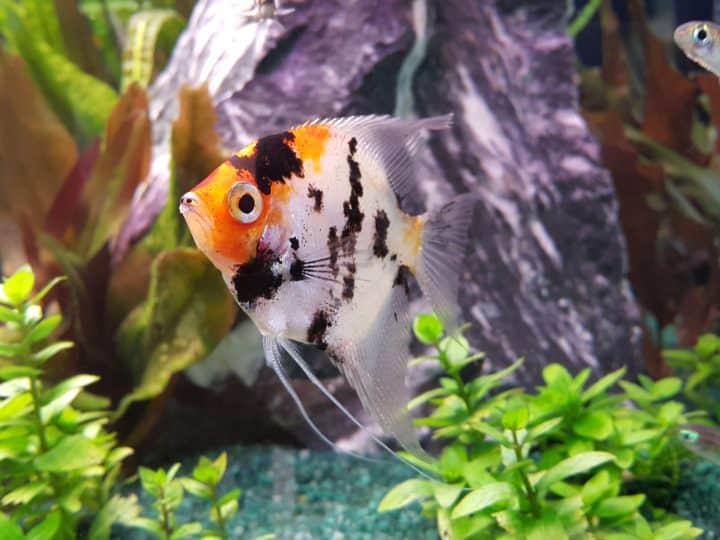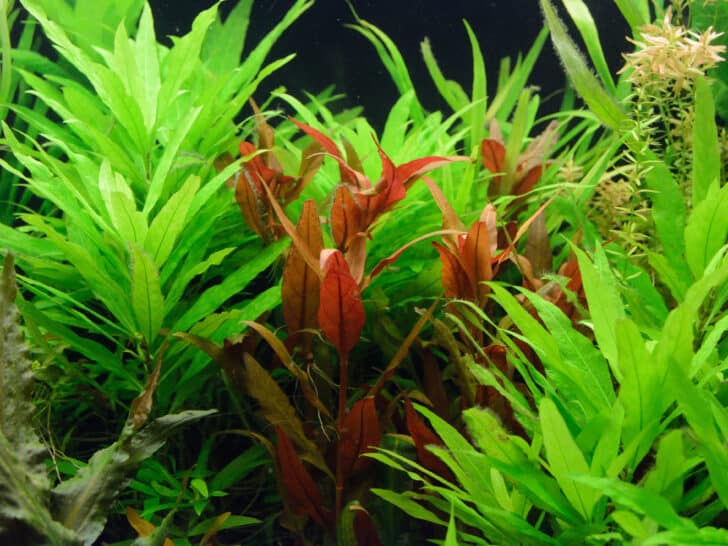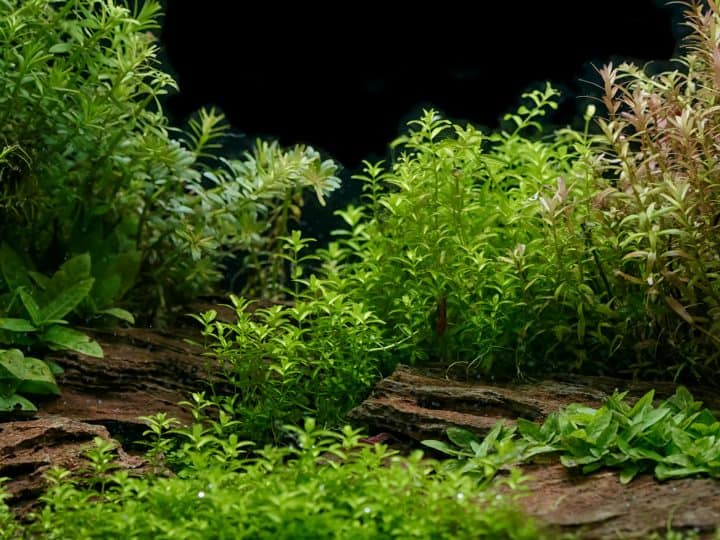Something that I quickly had to master when I first purchased an aquarium was balancing the levels of various compounds and chemicals in the water. Two very important substances that require fine tuning and any aquarium are nitrates and phosphates.
Quick Answer
Aquarium plants absorb nitrates and phosphates from the water, and in fact, plants use these substances as nutrients, which they use to perform photosynthesis and grow. The absorption of phosphates and nitrates by plants is not only beneficial to the plants, but also to the fish in the tank.
Today, I’m going to teach you everything you need to know about both phosphates and nitrates in your aquarium. Keep reading to find out exactly how to keep both your plants and fish healthy.
What Are Phosphates and Nitrates?
Phosphate is a naturally occurring substance, a natural source of phosphorus. Phosphorus is an element that provides plants with about one-quarter of the nutrients that they need for development and growth.
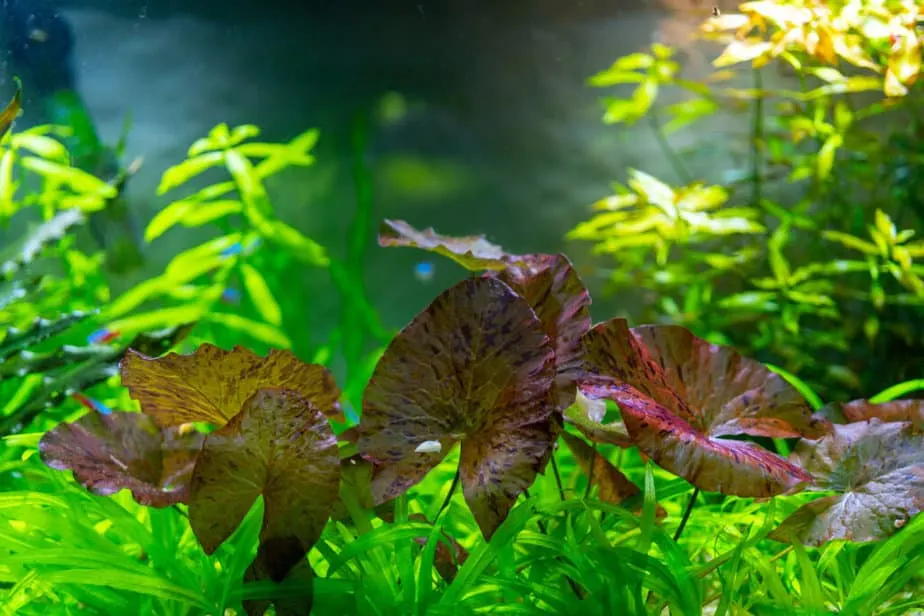
We then have nitrates, which are nitrogen-based compounds. Nitrogen is also a very important nutrient needed for proper plant growth and development.
Phosphates and nitrates are naturally occurring substances, both of which are required by various aquarium plants for proper growth.
Where do Phosphates and Nitrates in Aquariums Come From?
Now that we know what phosphates and nitrates are, how do they get into your aquarium?
First, phosphates can enter your aquarium through a number of ways, such as when uneaten fish food is broken down and by fish waste.
Tap water, fish food, and even various chemicals and substances you use to treat your aquarium water may all contain phosphates.
Then we have nitrate or nitrates. Nitrate is a naturally occurring chemical that is produced through the breakdown of nitrite by bacteria that are present in your biological filter.
Furthermore, nitrite is produced by the breakdown of ammonia by various beneficial bacteria.
Ammonia comes from fish waste, decaying plant matter, and unfitting fish food.
The vast majority of various substances in your aquarium, such as phosphates, nitrates, and even ammonia, generally come from fish waste, uneaten fish food, and decaying plant matter.
Do Aquarium Plants Absorb Phosphates and Nitrates?
Yes, aquarium plants absorb both phosphates and nitrates.
As we have touched on above, both phosphates or phosphorus, as well as nitrates or nitrogen, are very important compounds that in their own ways help plants perform photosynthesis and grow.
Without an ideal level of both of these substances, aquarium plants would not grow nearly as big or strong, or even grow at all.
Why do Aquarium Plants Absorb Phosphates and Nitrates?
I’ve talked about the fact that the aquarium plants do indeed absorb both phosphates and nitrates, and that both of these substances act as food for the plants.
However, I’d like to break this down further to explain exactly what both phosphate and nitrates do for plants.
First, nitrates contained in the soil and in the water act as a primary source of nitrogen, which is required for plant growth.
Plants convert nitrate or nitrogen into proteins, which are essential for growth.
We then have phosphate, which plants require in order to absorb other nutrients, such as nitrate or nitrogen.
Phosphate is also required for plants to develop a variety of cell structures.
Both of these substances are required in your aquarium to allow for optimal plant growth and development.
Are Phosphates and Nitrates Bad For Fish?
Although phosphates and nitrates are both relatively good for your aquarium plants, the story is not the same when it comes to your fish.
First, we have phosphates, which on their own can be toxic to fish if present in relatively high concentrations.
Too much phosphate in the water can reduce the overall amount of dissolved oxygen in the water, therefore making it very hard for your fish to breathe.
In fact, phosphates are also one of the number one causes of algae blooms in your fish tank, which is a whole other problem that you absolutely need to avoid.
We then have nitrates, which are created by beneficial bacteria breaking down ammonia and then nitrate.
Nitrate is not nearly as harmful to fish in higher concentrations as phosphate, but extremely high concentrations of nitrate can still be toxic to fish.
Therefore, you need to ensure that the levels of both phosphates and nitrates are kept relatively low, or else your fish will suffer.
Ideal Phosphate and Nitrate Levels for Aquariums
Seeing as neither nitrates or phosphates should be present in aquariums and high levels due to the health of your fish, let’s figure out how much of them should be present.
The phosphate levels in a fish tank should be below 0.02 parts per million. If the concentration of phosphates reaches one part per million, you are likely to see algae growths occurring.
Although nitrate levels in fish tanks should be as close to zero as possible, up to 10 parts per million is acceptable. The ideal level is no more than five parts per million.
How to Keep Phosphate and Nitrate Levels Under Control
Now that we know that high phosphate and nitrate levels are not good for your fish tank, let’s discover exactly how to keep these levels at a minimum.
Stock Up on Live Plants
Keeping in line with our topic of the day, one of the best ways to keep phosphate and nitrate levels relatively low is by having a lot of live plants.
Once again, those live plants will absorb both nitrates and phosphates as nutrients that they need to grow big and strong.
Furthermore, live plants are beneficial for your tank in many other ways, as they also help produce oxygen, and more. Here are some great aquarium plants to get started with.
Maintain Your Aquarium Filter
One of the easiest ways to control phosphate and nitrate levels in your tank is by making sure that you have a good aquarium filter and that you properly maintain it.
Most important of all is chemical filtration, particularly activated charcoal. A premium activated charcoal filter can remove up to 90% of phosphate from your aquarium.
However, a charcoal filter will not be able to remove nitrates from the water. To remove nitrates from the aquarium, you’ll need either a water conditioner or an ion exchange system.
Perform Regular Tank Maintenance
Seeing as these substances often come from fish waste, decaying organic matter, and uneaten food, an easy way to ensure that the levels do not build up is by maintaining your tank.
Use that gravel vacuum to suck up any detritus from your substrate, making sure to remove any and all uneaten food and fish waste.
Having a good mechanical filtration unit will go a long way on this front, as mechanical filters remove all sorts of solid debris from the water.
Weekly Water Changes
Performing regular water changes in your aquarium is also a very easy way to reduce the levels of phosphates and nitrates in the water.
Just remember that it can be dangerous to change more than 30% of the aquarium water per week.
Don’t Overfeed Fish
If you don’t want there being as much uneaten food and fish waste producing these potentially toxic substances, an easy solution is to stop overfeeding your fish, and to remove uneaten food from the tank.
Conclusion
While low levels of nitrates and phosphates are beneficial for your plants, overall, they won’t do your fish any favors.
Therefore, having a few good aquarium plants that can absorb these substances will allow for a healthy tank.

